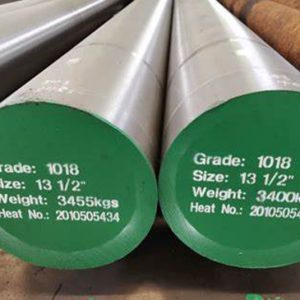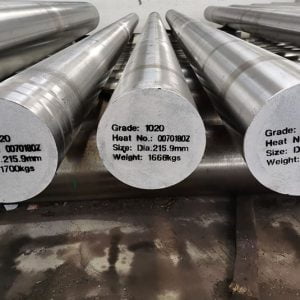Introduction
8620 steel is a low-alloy steel that is widely used in various industrial applications due to its excellent combination of toughness, strength, and ductility. This steel is known for its versatility, making it a popular choice for manufacturing components that require a balance of wear resistance and machinability. In this comprehensive guide, we will explore the properties, applications, heat treatment processes, and maintenance of 8620 steel. We will also answer frequently asked questions to provide a thorough understanding of this material.
What is 8620 Steel?

Composition of 8620 Steel
The composition of 8620 steel includes several key elements that contribute to its properties. The typical chemical composition is as follows:
- Carbon (C): 0.18 – 0.23%
- Manganese (Mn): 0.70 – 0.90%
- Phosphorus (P): 0.035% max
- Sulfur (S): 0.040% max
- Silicon (Si): 0.15 – 0.35%
- Chromium (Cr): 0.40 – 0.60%
- Nickel (Ni): 0.40 – 0.70%
- Molybdenum (Mo): 0.15 – 0.25%
These elements work together to provide 8620 steel with its desirable mechanical properties.
Key Properties of 8620 Steel
8620 steel is characterized by the following properties:
- Toughness: The presence of nickel in 8620 steel enhances its toughness, making it resistant to impact and shock loads.
- Strength: The combination of chromium and molybdenum contributes to the steel’s strength, allowing it to withstand high stress and strain.
- Ductility: 8620 steel maintains good ductility, which means it can be deformed without breaking, allowing for easier fabrication and machining.
- Wear Resistance: The steel’s composition provides good wear resistance, making it suitable for components subjected to friction and abrasion.
Mechanical Properties of 8620 Steel
The mechanical properties of 8620 steel can vary depending on the heat treatment process. The typical mechanical properties in an annealed condition are as follows:
- Tensile Strength: 655 MPa
- Yield Strength: 360 MPa
- Elongation: 31%
- Reduction of Area: 63%
- Hardness: 149 HB (Brinell Hardness)
These properties make 8620 steel suitable for a wide range of industrial applications.
Applications of 8620 Steel
Gear Manufacturing
One of the primary applications of 8620 steel is in the manufacturing of gears. The steel’s combination of toughness, strength, and wear resistance makes it ideal for producing gears that can withstand high loads and friction. 8620 steel gears are commonly used in automotive transmissions, industrial machinery, and heavy equipment.
Automotive Components
In the automotive industry, 8620 steel is used to manufacture various components such as crankshafts, camshafts, and connecting rods. The steel’s ability to withstand high stress and strain makes it suitable for these critical engine parts.
Structural Parts
8620 steel is also used in the construction of structural parts that require a balance of strength and ductility. These parts include shafts, pins, and axles, which are essential in various mechanical systems.
Heavy Machinery
The toughness and wear resistance of 8620 steel make it a preferred material for components in heavy machinery. This includes parts for mining equipment, agricultural machinery, and construction vehicles.
Heat Treatment of 8620 Steel
Carburizing Process
Carburizing is a heat treatment process that involves adding carbon to the surface layer of the steel. This process increases the surface hardness while maintaining a tough and ductile core. The typical carburizing process for 8620 steel involves the following steps:
- Heating: The steel is heated to a temperature between 900°C and 950°C in a carbon-rich environment.
- Soaking: The steel is held at this temperature to allow carbon to diffuse into the surface layer.
- Quenching: The steel is rapidly cooled to lock the carbon in place, resulting in a hard surface layer.
- Tempering: The steel is reheated to a lower temperature to relieve internal stresses and improve toughness.
Normalizing
Normalizing is another heat treatment process used for 8620 steel. It involves heating the steel to a temperature above its critical point and then air cooling it. This process refines the grain structure and improves the mechanical properties of the steel.
Annealing
Annealing is a heat treatment process that softens the steel and improves its machinability. The process involves heating the steel to a specific temperature and then slowly cooling it. Annealed 8620 steel is easier to machine and shape.
Tempering
Tempering is a process used to improve the toughness and ductility of quenched steel. The steel is heated to a temperature below its critical point and then cooled. This process reduces brittleness and enhances the overall mechanical properties.
Mechanical Properties of 8620 Steel in Different Conditions
| Condition | Tensile Strength (MPa) | Yield Strength (MPa) | Elongation (%) | Hardness (HB) |
|---|---|---|---|---|
| Annealed | 655 | 360 | 31 | 149 |
| Carburized | 1200 – 1500 | 850 – 1100 | 10 – 15 | 60 – 62 HRC |
| Normalized | 700 – 850 | 400 – 500 | 20 – 25 | 170 – 200 |
| Tempered | 900 – 1100 | 650 – 800 | 12 – 20 | 220 – 250 |
Machining and Welding of 8620 Steel

Machining Tips
8620 steel is relatively easy to machine, especially in its annealed condition. Here are some tips for machining 8620 steel:
- Use Sharp Tools: Ensure that the cutting tools are sharp to achieve a clean finish and reduce tool wear.
- Moderate Cutting Speeds: Use moderate cutting speeds to prevent overheating and maintain tool life.
- Lubrication: Use appropriate lubricants to reduce friction and improve surface finish.
- Controlled Feed Rates: Maintain controlled feed rates to avoid excessive tool wear and ensure precision.
Welding Techniques
Welding 8620 steel requires careful consideration due to its alloy composition. Here are some welding techniques for 8620 steel:
- Preheating: Preheat the steel to a temperature between 150°C and 200°C to prevent cracking.
- Low Hydrogen Electrodes: Use low hydrogen electrodes to minimize the risk of hydrogen-induced cracking.
- Post-Weld Heat Treatment: Perform post-weld heat treatment to relieve residual stresses and improve the weld’s toughness.
- Controlled Cooling: Allow the welded part to cool slowly to prevent rapid cooling and cracking.
Conclusion
Understanding the properties of 8620 steel is crucial for selecting the right material for various industrial applications. This low-alloy steel offers a unique combination of toughness, strength, and wear resistance, making it ideal for manufacturing gears, automotive components, structural parts, and heavy machinery. By exploring its composition, mechanical properties, heat treatment processes, and machining techniques, you can make informed decisions to optimize its use in your projects. Whether you’re a manufacturer or an engineer, 8620 steel provides the versatility and reliability needed to meet your specific requirements.
FAQ
What is the primary use of 8620 steel?
8620 steel is primarily used in the manufacturing of gears, automotive components, structural parts, and heavy machinery due to its excellent combination of toughness, strength, and wear resistance.
How does carburizing improve 8620 steel?
Carburizing increases the surface hardness of 8620 steel while maintaining a tough and ductile core. This makes the steel more wear-resistant and suitable for high-stress applications.
Can 8620 steel be welded?
Yes, 8620 steel can be welded using appropriate techniques such as preheating, using low hydrogen electrodes, and performing post-weld heat treatment to ensure a strong and durable weld.
What are the mechanical properties of annealed 8620 steel?
Annealed 8620 steel typically has a tensile strength of 655 MPa, a yield strength of 360 MPa, an elongation of 31%, and a hardness of 149 HB.
Why is 8620 steel preferred for gear manufacturing?
8620 steel is preferred for gear manufacturing due to its toughness, strength, and wear resistance, which allow it to withstand high loads and friction in gear applications.









